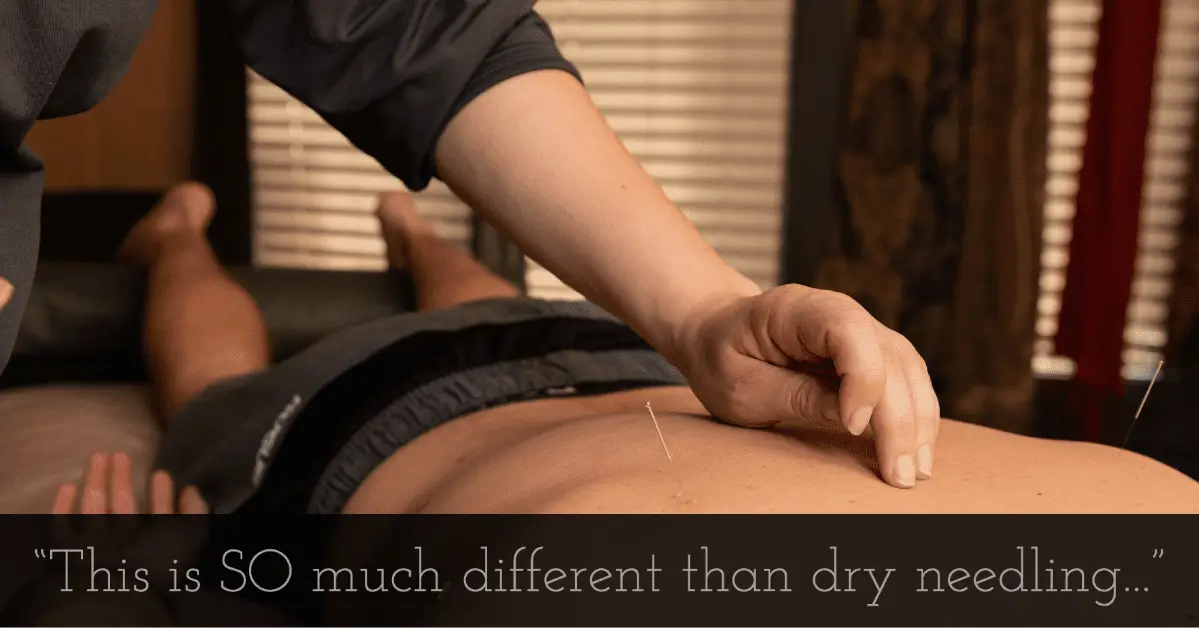Recent testimony – “This is SO much different than dry needling…!”
YES! YES! Soooo much YES! We will save the ‘official’ soap box talk around dry needling for another day, BUT we do feel there are some important things to note when it comes to acupuncture and dry needling:
- Dry Needling IS an acupuncture technique! Yes, it IS ACUPUNCTURE…however, Acupuncture is NOT dry needling ~ ‘all dry needling is acupuncture, but not all acupuncture is dry needling.’ Even in the Chinese medicine world, dry needling is considered “trigger point” therapy, using what we call Ashi Points (“trigger points”)
- Do WE at (Jing Shen Healing Arts) do dry needling? Honestly, we prefer not to unless we feel it is absolutely essential! Why!?! Anyone who has had dry needling done knows it is often a painful experience; we are not in the “no pain, no gain…or in this case no pain, no relief” school of thought. It is NOT necessary to power through more discomfort in a therapy intended to help you get better, in order to find relief. Through evaluation, assessment and proper diagnosis, we can treat pain WITHOUT sticking a needle into something that is already inflamed and likely agitated. It is a tool in our tool box which we are ready to use when necessary, but rarely do we ever need it.
- Dry Needling is a ‘bandaid’ treatment. Because dry needling only works at the symptomatic level, this technique does not address the root of the pain/discomfort/tightness (etc..) Yes, releasing a trigger point may relieve tension for some time (time varies), but it is highly likely that the pain/discomfort/tightness will return and it will return at the same level of intensity as before treatment.
As Doctors of Chinese medicine, if this same scenario occurs thru an acupuncture (Chinese Medicine) session, it tells us more about the patient’s case and cues us in on adjustments we need to make in order to address the root of the symptoms. Over time, our goal is LESS treatment; less treatment means you are not only getting relief, but treatments are holding and your body is healing without the need for external intervention. The ‘exception’ (using that term loosely) to that philosophy are those who are seeking general maintenance/wellness & prevention care & athletes who are under constant tension with training/performing in their craft, even then, seeking treatment should be more proactive versus reactive!
This is a topic and conversation that could go on and on, but the take away here (for today) is that the use of Chinese Medicine and Acupuncture for health & healing extends wayyyyy beyond just our muscles and our nervous system, Five Element Acupuncture is a holistic approach to care, meaning we work with ALL physical body systems (muscular, nervous, cardiovascular, respiratory & more), with an added focus on mental, emotional and even spiritual health (whatever that means for YOU). & you do not have to experience more pain in order to find relief!!
*if you find yourself curious about dry needling &/or acupuncture, talk to a licensed acupuncturist/Chinese medicine practitioner. They are the SAFEST, most qualified reference for this type of work and they are the most qualified provider when it comes to therapies that involve the insertion of needles*

